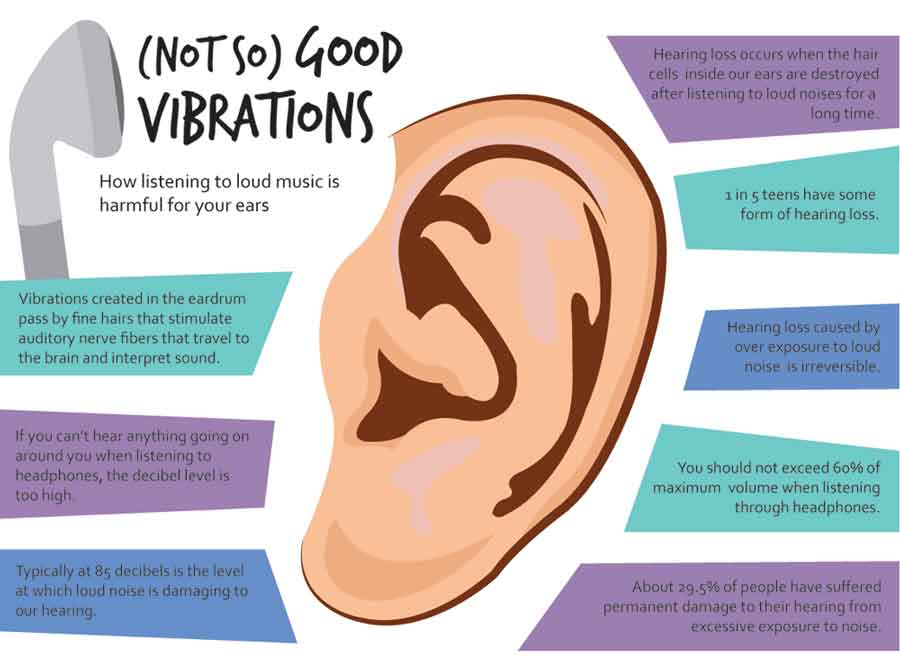Blowing up the volume; blowing out your ears
One thing has managed to invade schools, businesses and even homes: earbuds. After their introduction in 2001 by Apple, earbuds managed to almost completely replace headphones because of portability.
For a while, clunky headphones became almost obsolete; the convenience may have led to a problem.
According to beltone.com, hearing damage caused by earbuds is happening more and more often. Their study shows 20 percent of American teens already suffer from hearing loss.
Earbuds are unhealthy after a certain point, which is typically two or three hours of continuous use, according to the National Library of Medicine. Symptoms of excessive earbud use is a muffling or ringing sound.
“There is a particular pattern of hearing loss that is associated with exposure to loud sound, whether that exposure has been to high intensity — loud — music or other sound or noise sources,” University of Missouri-Columbia audiologist Barbara McLay said. “There is plenty of evidence that listening to loud music, whether through personal earbud use or at live music venues, contributes to hearing loss in many people.”
Junior Brandon Tobin said he’s not too worried about having hearing problems.
“It’s just earbuds,” Tobin said. “It’s not that big of a deal.”
Tobin said he uses earbuds every day, typically for listening to music, watching videos or talking to people. Regarding his headphone usage, Tobin says they’re very helpful for listening to things without bothering others, but not good with portability.
The difference between headphones and earbuds is that earbuds do not block outside noise. Depending on the quality of earbuds, they only blur outside noises. This can cause earbud listeners to turn their music up to compete with other noises, McLay said.
Senior Madeline Inslee said she doesn’t think she’s ever used headphones. However, she uses earbuds every day for most of the day.
“At school I usually have it at a fairly quiet volume so I can hear teachers and stuff,” Inslee said. “[At home, it’s] whatever the max volume is.”
Inslee added that she’s not afraid of going deaf because of the earbuds themselves, but rather because of her volume.
Centerpointaudio.com, an audio design company, recommends earbud users keep their volume at below 85 decibels — which is at about half volume on an electronic device — and to refrain from using earbuds for long periods of time. They say it’s also not only the volume that matters, but the length of use.
“The longer one listens to loud music or any other sound, the greater the potential for long-term damage,” McLay said. “Two things to watch out for that can serve as signs that a current exposure has been too great … are a temporary change in hearing and tinnitus— [a ringing in the ears].”
Despite Inslee and Tobin’s confidence in their ears, McLay warns against excessive earbud use.
“In all cases, the symptoms should be taken seriously,” McLay said. “The damage could be intense.”
By Emily Untershutz
Infographic by Claire Simon
Are you concerned about ear damage due to excessive earbud use?


























































































